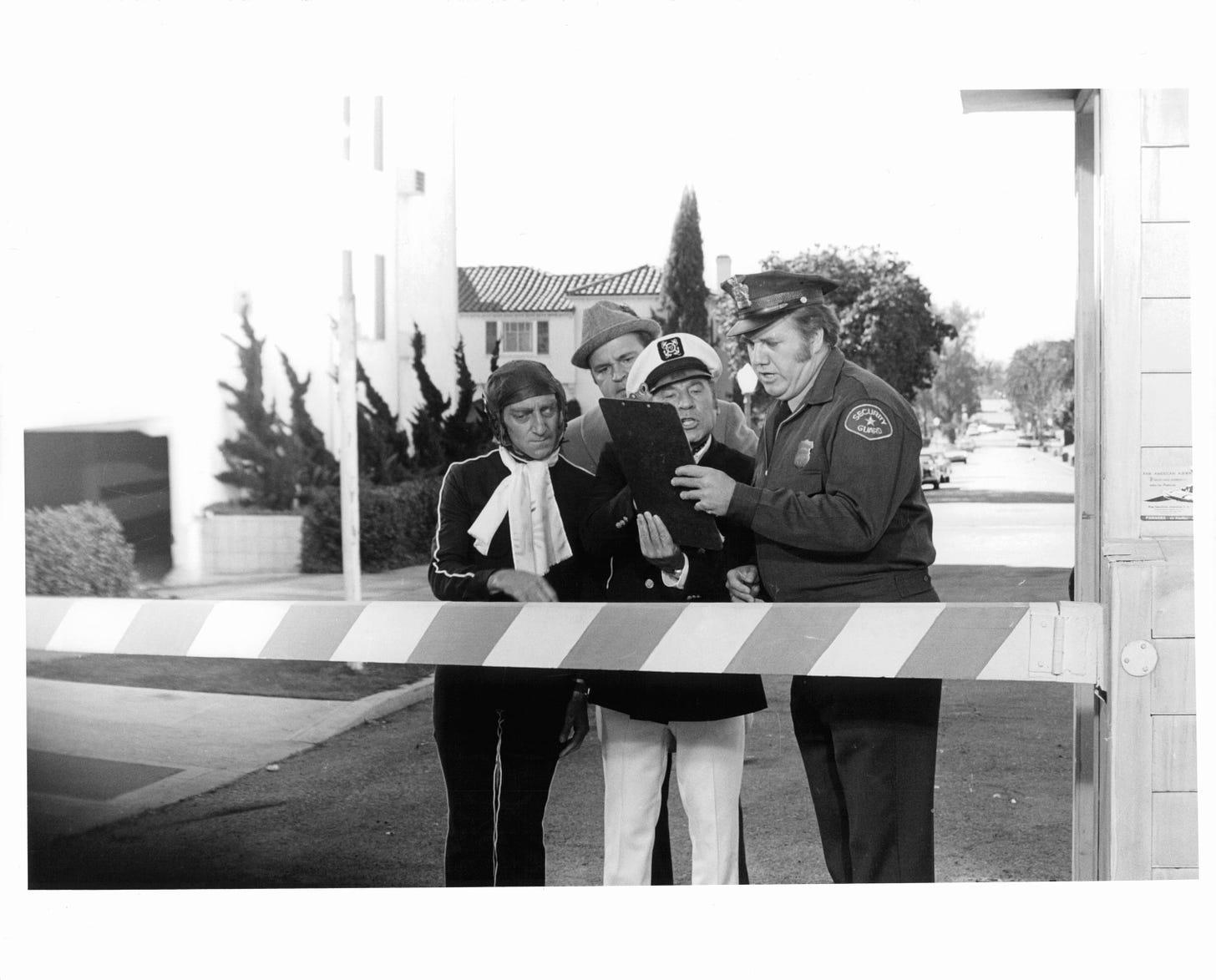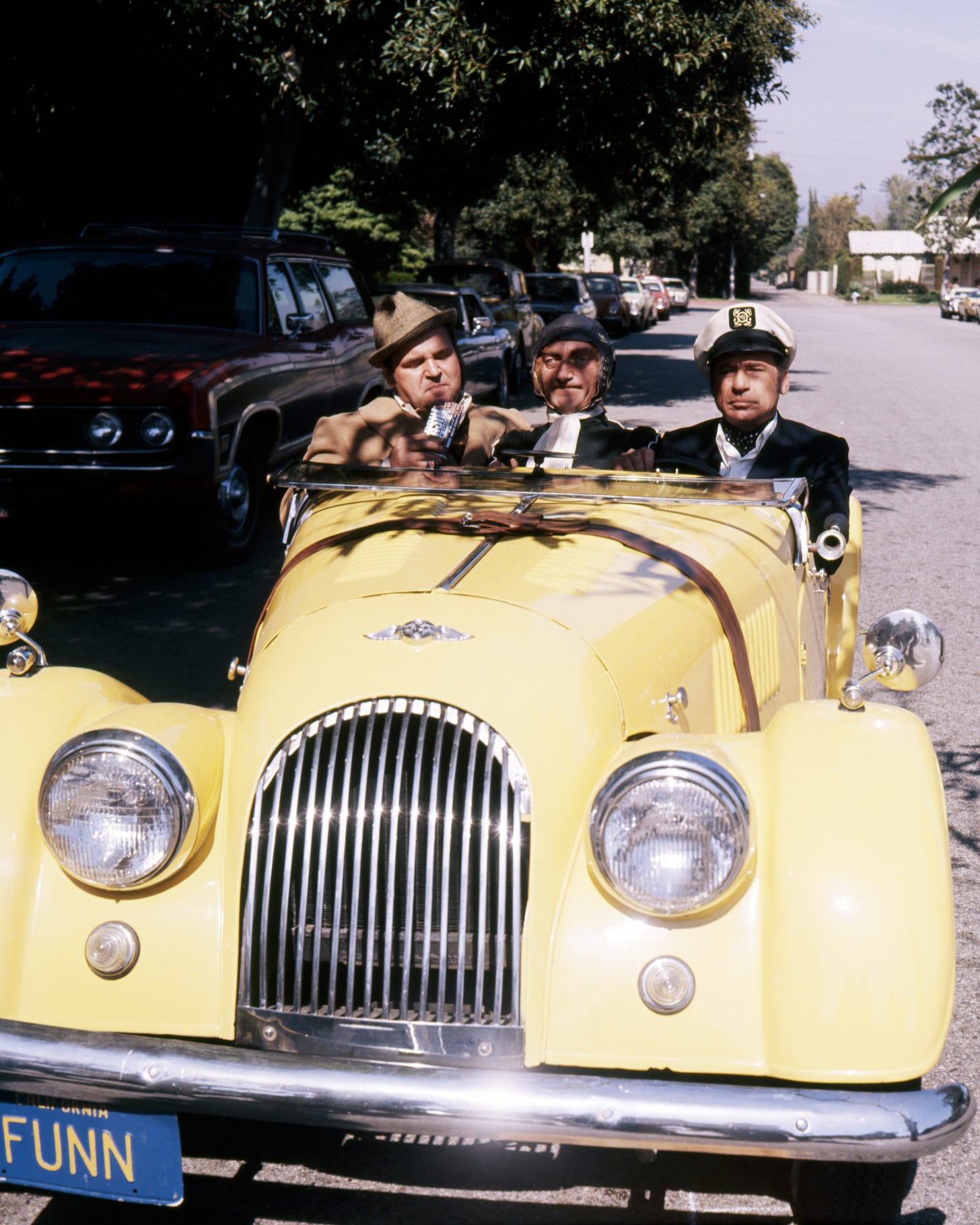Silent Alarm: The Prescience of Mel Brooks’s ‘Silent Movie’
With his follow-up to 'Blazing Saddles' and 'Young Frankenstein,' Brooks tempered the silliness with a deep concern about where movies were headed.
At the height of his 1970s success, Mel Brooks saw the future of movies and knew it didn’t have much use for the past. Brooks had become a filmmaker via a sideways route. That included a stop on the writing staff of Your Show of Shows, after which he became an unexpected celebrity opposite his pal Carl Reiner as half of the team behind the hit “2000 Year Old Man” comedy routine. This in turn led to him becoming the co-creator of the TV hit Get Smart! But beneath Brooks’s easygoing, anything-for-a-laugh demeanor beat the heart of a serious cinephile, one who spent the free hours of his childhood in Brooklyn movie houses and continued his cinematic education watching the flowering of international filmmaking after returning from his service in World War II. You can’t make parodies as precise as Blazing Saddles and Young Frankenstein without an understanding that goes beyond mere affection.
The twin success of those films in 1974 allowed Brooks to do pretty much whatever he wanted next, especially within the realm of genre parody. He decided to run with an idea brought to him by his friend, the comedy writer Ron Clark: an old-fashioned silent comedy set in modern Los Angeles. Brooks had grown up watching Chaplin, Keaton, Lloyd and others and leapt at the chance to pay homage to the silent greats. As with Blazing Saddles, he looked back to his days as a member of a writers room and assembled a writing team that included Clark, Rudy De Luca, and a just-starting-out variety show writer named Barry Levinson (whom Brooks advised to check out Fellini’s I, Vitelloni, a film Levinson would remember when drawing on his own Baltimore youth to make Diner). They set about thinking up scenes that would pay homage to their inspirations. But they needed a story.
The Reveal is a reader-supported newsletter dedicated to bringing you great essays, reviews and conversation about movies (and a little TV). While both free and paid subscriptions are available, please consider a paid subscription to support our long-term sustainability.
“I told them that somehow we should get an engine that pulled our picture along,” Brooks recalls in his 2021 memoir All About Me!: My Remarkable Life in Show Business. “Something underneath the fun and frolic that drove our movie forward. We came up with a great engine: money versus art.” He didn’t have to look far for inspiration. “Big commercial companies that had nothing to do with the art of entertainment but were loaded with money were gobbling up old traditional movie studios just for their financial value.” In 1966, Gulf + Western bought Paramount Pictures. One year later, Transamerica bought United Artists, a studio founded on an idea of artistic independence. In 1982, Coca-Cola would buy Columbia. Brooks couldn’t have known that at the time, but it undoubtedly wouldn’t have surprised him. He knew an alarming trend when he saw one.
Enter Mel Funn, the protagonist of Silent Movie, a character played by Brooks who also, up to a point, serves as Brooks’s surrogate. Once Hollywood’s greatest director, Funn fell on hard times when his drinking grew out of hand (something that never seemed to be much of a problem for Brooks). But all that’s behind Funn as the film opens and, upbeat about the future, he tools about Los Angeles sporting a captain’s hat accompanied by two sidekicks: the lecherous Marty Eggs (Marty Feldman, inexplicably clad in a jumpsuit and leather aviator’s cap) and the genial Don Bell (Dom DeLuise).
Funn’s big idea: he wants to make a silent movie. Mirroring the close relationship Brooks enjoyed with 20th Century Fox’s Alan Ladd Jr. (“Laddie” to his friends), the Chief of Big Picture Studios (played by Brooks’s old boss Sid Caesar) would love to let him make it, too. The only problem: the Chief desperately needs a hit if Big Picture Studios is to avoid being taken over by Engulf + Devour, a heartless conglomerate interested only in profits. (Motto: “Our Fingers Are In Everything.”) If Funn can’t turn the project into a runaway hit, the studio is doomed.
Driven by that engine, Silent Movie moves from one sight gag-filled set piece to the next, some better than others. Brooks et al. can’t rival the athleticism of the great silent clowns in executing physical comedy. (Feldman comes closest in a performance that draws on Harpo Marx.) But they have a great time trying, and the film’s filled with fun gags and a handful of standout scenes, like a dance sequence with special guest (and Brooks’s wife) Anne Bancroft. Bancroft’s one of a parade of cameos that includes Liza Minnelli, Paul Newman, James Caan, and Burt Reynolds, helping make Silent Movie double as a time capsule for a particular moment in Hollywood history. (A running gay panic joke hasn’t aged too well, however.) Silent Movie doesn't reach the heights of Brooks’s best films, but it’s easy to like, and even easier to admire for its audaciousness: true to its name, the film has no dialogue (apart from a refusal to appear in Funn’s film spoken by famed mime Marcel Marceau, a worthwhile exception).
It’s just as easy to appreciate the film’s prescience. Brooks wasn’t the only filmmaker concerned about the growing corporatization of Hollywood in the 1970s, but he was the only one making a movie about it. That he made it at the height of his power in Hollywood and released it in the years between Jaws and Star Wars, the two films that kicked off an obsession with mega-profitable blockbusters, makes it all the more bold.
When people lament that Blazing Saddles couldn't get made today, they’re right for all the wrong reasons. Brooks saw a Hollywood future that might not have room for him, or for the sort of films he loved. For a while, he found a way to fight against it, launching Brooksfilms, a production company responsible for, among others, The Elephant Man, Frances, 84 Charring Cross Road, My Favorite Year (a film inspired by Brooks’s television years), The Fly, and other artistically ambitious, creator-driven 1980s movies(and Solarbabies). Brooksfilms started to wind down a decade into its existence (see above re: Solarbabies) but for a while, long after tipping his hat to the silent era, Brooks did his best to keep a bit of the old way of doing things alive in an environment increasingly dominated by the bottom line and faceless entities whose fingers were in everything.






Me still marvel at 1974, year when Brooks directed two of top three grossing films (Young Frankenstein and Blazing Saddles) and Coppola directed Godfather II and Conversation. It rare for director to make two films in one year, and two best examples both happen in 1974. (Me will grant you Dial M For Murder and Rear Window could probably challenge those two for best one-two punch)
Silent Movie, for all its faults and silliness, was my introduction as a child to Mel Brooks and to that type of rapid-fire gag comedy, so it will always have a special place for me. I remember physically lying on the ground in tears when the merry-go-round horse takes something like a full minute to drop several wooden turds in the middle of a scene.